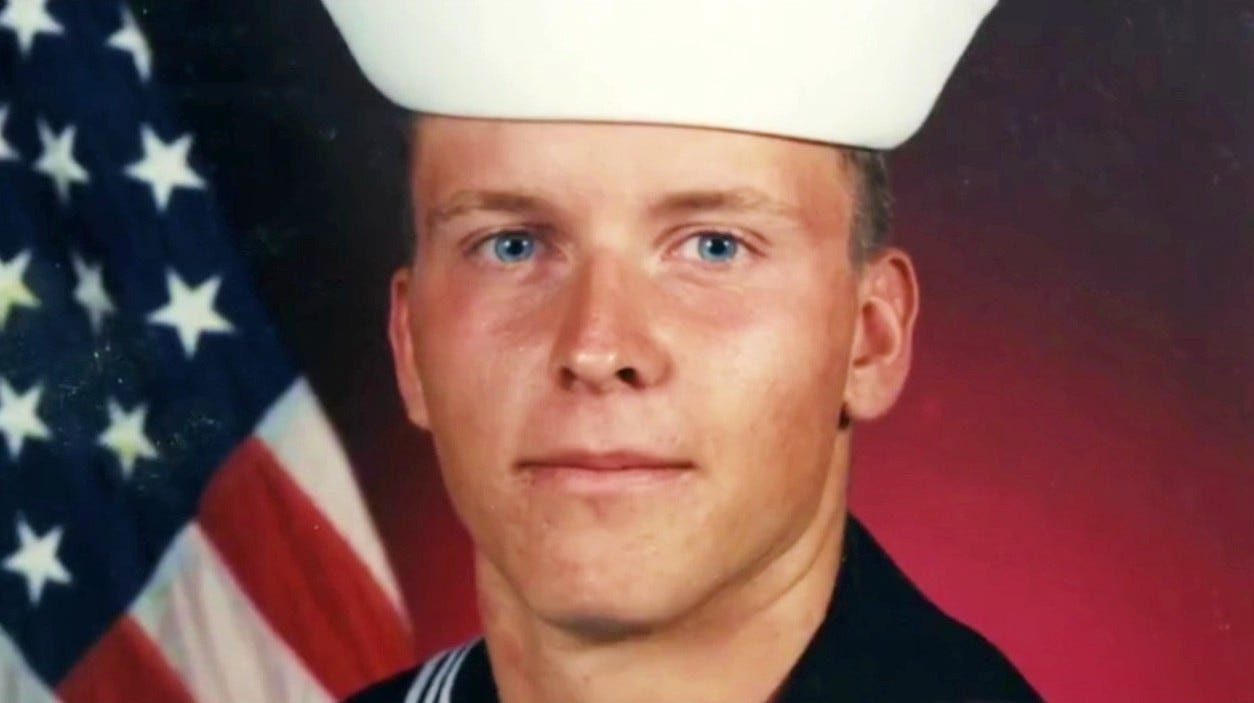On This Day in 1992: The Murder That Exposed the Lie Behind Don’t Ask, Don’t Tell
Alan Schindler’s brutal death was not an isolated crime.
A Uniform Stained by Silence
On this day, 27 October 1992, a young sailor was killed for being gay.
Alan R. Schindler Jr. was 22 years old. He served four years in the United States Navy and died in a public toilet in Sasebo, Japan, beaten so savagely by two of his shipmates that even his own comrades could not recognise his face.
This was no random act of violence. It was a targeted assault on a man singled out and hounded by his peers, because he had the courage to say what many in uniform could not. He told the truth about who he was.
His death did not bring justice. It brought policy. And that policy, known as Don’t Ask, Don’t Tell, would go on to punish thousands more like him in the name of protecting an institution unwilling to face itself.
False Balance and the Birth of a Policy
In the aftermath of Schindler’s murder, the United States military faced public scrutiny it could not ignore. The violence had forced a long-buried question to the surface. Should gay men and women be allowed to serve in the armed forces?
But the answer Washington offered was not clarity. It was compromise, crafted not to resolve the issue, but to sweep it into a bureaucratic corner.
Don’t Ask, Don’t Tell, introduced in 1993 under President Bill Clinton’s administration, was hailed as a progressive step. In reality, it institutionalised fear.
It allowed gay service members to remain in the military, but only if they stayed silent. It also forbade military leaders from directly inquiring about a person’s sexuality. On the surface, it looked like a middle ground. In practice, it punished openness and protected hostility.
The result was a policy that pleased no one. To its critics on the right, it legitimised behaviour they refused to accept. To its critics on the left, it betrayed those it claimed to shield. Most of all, it gave cover to a system that still did not want to deal with the reality of gay men and women in uniform.
Another Victim, Same Silence
The military treated Schindler’s death as an isolated incident. But silence has a pattern. And patterns repeat.
In 1999, Private First Class Barry Winchell was murdered at Fort Campbell, Kentucky, struck with a baseball bat while he slept. Like Schindler, Winchell had endured relentless homophobic abuse. Like Schindler, his chain of command chose inaction.
Why? Because to intervene would mean investigating, and under Don’t Ask, Don’t Tell, that meant opening a file on Winchell himself. The system was designed to protect itself, not the people who served within it.
This was the reality for thousands of gay service members. Abuse was ignored. Harassment was tolerated. Careers were ruined. All to uphold a lie that allowed the military to appear inclusive while staying institutionally hostile.
Numbers That Cannot Be Ignored
Between 1993 and 2011, over 14,000 men and women were discharged from the US military under Don’t Ask, Don’t Tell. Many of them had spotless records. Some, like Senior Chief Petty Officer Timothy R. McVeigh, had served with distinction for years before being outed and discarded.
McVeigh’s case in 1997 showed just how absurd the rules had become. His discharge was triggered by an online profile that listed him as gay. That was enough to end a decorated 17-year career. When McVeigh challenged the decision in court, the judge described the Navy’s actions as a “search and destroy mission”. Yet even though he won the case, McVeigh still lost his job.
Don’t Ask, Don’t Tell was not a compromise. It was camouflage. It allowed the military to pretend it was moving forward while continuing to punish the very people it claimed to protect.
Finally, the Truth
It took nearly two decades after Alan Schindler’s death for the truth to be acknowledged.
In 2011, President Barack Obama formally repealed Don’t Ask, Don’t Tell. The new regulations allowed gay and lesbian service members to serve openly without fear of discharge. The military brass, long resistant to change, signed off on the decision. Official studies showed that inclusion would not damage morale or unit cohesion. What had once been treated as a threat was finally recognised as a right.
The repeal did not undo the damage. It did not bring back the dead or reverse the forced discharges. But it did mark the beginning of something long overdue, honesty.
One of the most memorable moments came when Senior Airman Randy Phillips posted a video of himself coming out to his father on the day the repeal took effect. The recording went viral, not because it was flashy, but because it was human. A soldier, on duty, telling the truth, and not being punished for it.
What the Uniform Should Mean
Alan Schindler was killed because he refused to lie. The system around him demanded silence, and he broke it. That decision cost him his life.
The military has always asked for sacrifice. But for decades, it asked gay service members to sacrifice something no one should be forced to give, their identity.
Don’t Ask, Don’t Tell was never a compromise. It was a cover-up. It protected an image of unity by suppressing reality. It taught those in uniform that truth was dangerous and silence was safer. And in doing so, it created an environment where violence could grow and justice could be delayed.
On this day, we remember Alan Schindler not just as a victim, but as a symbol of what happens when institutions fail the people within them. His story is not just about military policy. It is about the cost of fear, the cruelty of enforced silence and the long road towards dignity.
Because history is not just made by battles and treaties. Sometimes, it is made by the refusal to stay quiet.



